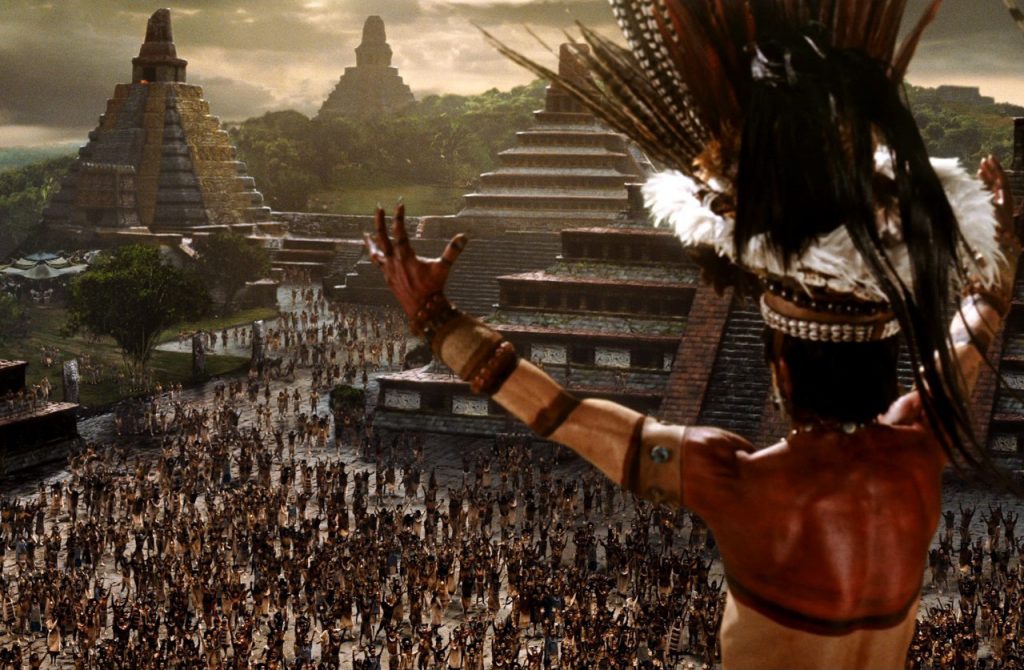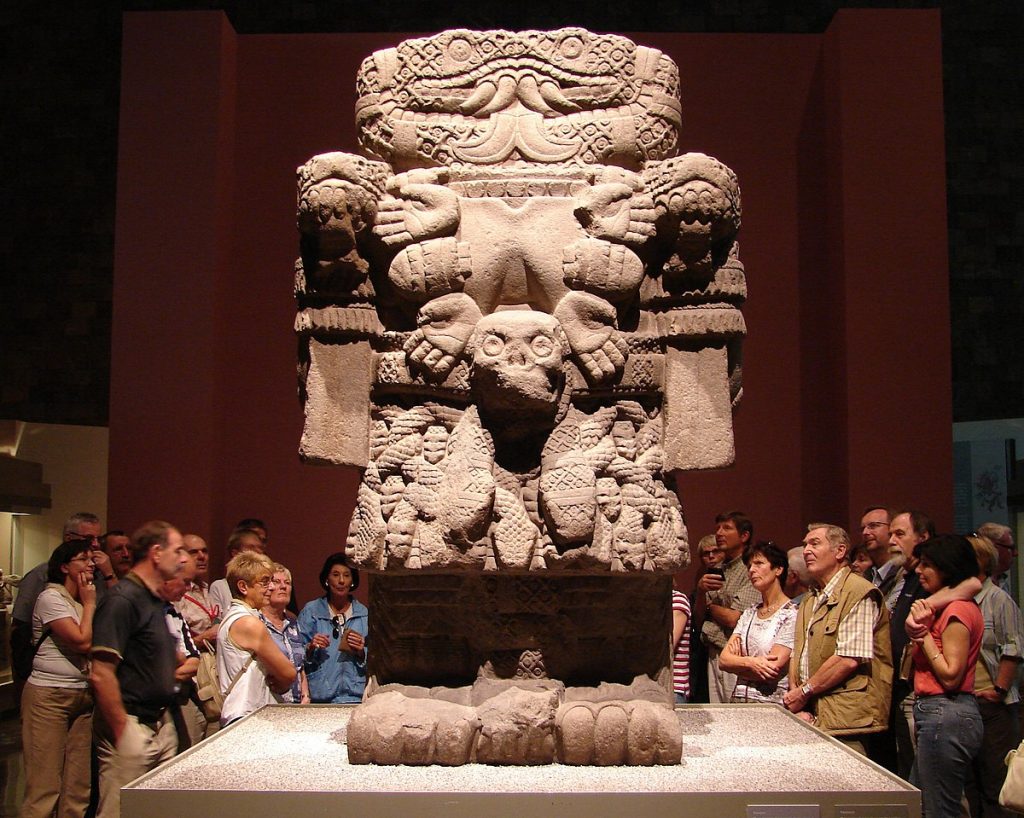History of Ancient Civilizations of Mexico: Maya, Aztecs and Toltecs
Mexico, rich in cultural heritage and history, attracts the attention of researchers and tourists from all over the world for its ancient civilizations. Three powerful cultures stand out among them: the Maya, Aztecs and Toltecs. Their great achievements in science, art, architecture and religion have left an indelible mark in the history not only of Mexico, but also of the whole world.

The ancient civilizations of Mexico represent the foundation of the diversity of cultures and traditions of this country. The Mayans, who had a unique calendar and impressive astronomical knowledge, left behind majestic pyramids, temples and sculptures that still fascinate with their splendor. Their system of writing and mathematical calculations opened new horizons of knowledge for the world.
The Aztecs, who created a great imperial state, astonished the world with their knowledge of architecture, agriculture and crafts. Their cities, such as Tenochtitlan, were considered among the largest and most beautiful in the world of their time. Aztec customs and religious practices, including sacrifices, are still of interest to researchers today.
The Toltecs, considered the predecessors of the Aztecs, contributed to the cultural heritage of Mexico. Their mythology, art, and architecture had a significant influence on other civilizations in the region.
Researching and understanding the history of these ancient civilizations allows us to better understand modern Mexico and its cultural diversity. In this article, we will take a closer look at each of them and their contributions to world history and culture.
Maya: origin and flourishing

The Mayan civilization, located in present-day Mexico, Guatemala, Belize, and other Central American countries, is remarkable for its rich history, cultural heritage, and mysterious disappearance. From their initial emergence to their mysterious collapse, the Maya have left us with many amazing findings and questions.
Origins and flourishing
The Maya originated in the Yucatan region of present-day Mexico around 2000 B.C. They created magnificent cities with majestic temples, pyramids and palaces. One of the remarkable features of Mayan culture was their advanced written language known as glyphs, which were used to record sacred texts and history.
The Mayans were masters of math and astronomy. The civilization was famous for its mathematical achievements, including the invention of the decimal system and the use of zero in mathematics long before it was introduced in Europe.
Astronomy was another important field for the Maya. They were able to accurately determine the positions of the stars, planets, and lunar phases, which helped them build astronomical structures and calendars. They created complex calendars, including the circular Tzolkin calendar and the long Haab calendar, which allowed them to pinpoint times for agricultural work, religious ceremonies, and astronomical observations.
As well as remarkably accurate astronomical observations. Their architectural achievements, such as pyramids, temples, palaces and terraced gardens, testify to the high level of development of their civilization and make us marvel to this day.
Interesting facts about the Maya
Despite their antiquity, the Mayans made many amazing discoveries and achievements:
- The ball game of poker: The Mayans played a game that resembles modern poker, using special dice called “ball” to make important decisions and gamble.
- Three-dimensional illusions in art: The Maya created three-dimensional illusions in their art, using perspective and proportion techniques to create a sense of depth on flat surfaces.
Causes of the Mayan decline
Despite their cultural and scientific rise, the Mayans faced an inevitable decline. Possible reasons for their decline include:
- Drought and soil depletion: As archaeological studies show, the Maya faced long periods of drought and soil depletion, resulting in reduced crop yields and lack of food.
- Wars and conflicts: Conflicts over resources and territory arose in some regions, weakening the Maya and exacerbating their already existing situation.
- Social and political changes: Internal conflicts, corruption, and power struggles may also have contributed to their downfall.
A complex mix of factors led to the decline of the Maya civilization.
Aztecs: the great empire

The Aztecs are one of the most famous and influential civilizations that flourished in Mexico before the arrival of the Spanish. Their history is a mixture of magnificent achievements in art, culture and architecture, as well as military conquests and great tragedies. Let’s examine their great empire in more detail.
Origins and Formation
The Aztecs, also known as the Mexica, appeared in the fourteenth century in what is now Mexico. Their history began with the foundation of the city of Tenochtitlan, which became the center of their civilization. According to legend, the Aztecs found the site for their city where they saw an eagle perched on a cactus with a snake in its beak, which was considered a sign of divine guidance.
Political organization and social structure
The Aztec Empire was organized on the principles of monarchy and federalism. The head of the empire was the ruler, Tlatoani, who held all power and controlled political and military activities. The social structure was hierarchical: at the top were the rulers and high priests, and at the base were the peasants and workers.
Cultural characteristics
Religion played a huge role in the life of the Aztecs. They worshipped a multitude of gods whose images were often embodied in colorful images and ritual sacrifices. Aztec art included sculpture, painting, pottery, and jewelry. Architectural achievements included grand temples and pyramids, as well as irrigation and sewage systems.
Conquests and the fall of the empire
The Aztecs were active in military campaigns and conquests of neighboring territories, expanding their empire. However, the arrival of the Spanish in the early 16th century led to a dramatic deterioration. Diseases brought by the conquistadors, military battles and economic oppression led to the collapse of the Aztec empire. In 1521, the empire was conquered by the Spanish and Mexico was subjected to Spanish rule.
The Aztecs left us a legacy in the form of their culture, art and science that continues to inspire and fascinate many to this day.
The Toltecs: predecessors of the Aztecs

The history of the Toltecs is closely linked to the development of the ancient civilizations of Mexico. They were considered the ancestors of the Aztecs and played an important role in shaping Mexican culture and history. Let’s take a closer look at this amazing civilization.
Origins and Dawn of the Toltecs
The Toltecs appeared in the IX century on the territory of modern Mexico. Their history began with the establishment of the capital city of Tollan, which became the center of their civilization. The Toltecs were known as outstanding warriors, builders, and scientists. They developed into a prosperous nation that had a significant influence on other civilizations in Mesoamerica.
Cultural Heritage
The art and architecture of the Toltecs reflected their high level of development and talent. They built majestic temples, pyramids, and palaces that served as centers of cultural and religious life. Mythology and religion also played an important role in Toltec life. They worshipped many gods and performed rituals and ceremonies, including sacrifices, in hopes of gaining favor with the deities.
Influence on other civilizations
The Toltecs had a significant influence on other civilizations in Mesoamerica, including the Maya and Aztecs. Their technology, art, and cultural traditions were passed on to subsequent generations and had a profound influence on the formation of Mexican culture and identity.
Disappearance
The reasons for the disappearance of the Toltecs are not entirely clear. It may have been due to internal conflicts, invasion by other peoples, or changes in the environment. Eventually, in the twelfth century, the Toltecs abandoned their cities and their civilization faded into the past, leaving only traces of their greatness in Mexican history.
The Toltecs, though vanished in antiquity, left an indelible mark on the history and culture of Mexico. Their contribution to the development of Mesoamerican civilization cannot be overstated, and to this day many aspects of their heritage continue to inspire and amaze explorers and travelers.
Interaction and conflicts among civilizations

The interaction between the Maya, Aztecs, and Toltecs was saturated with the exchange of knowledge, trade, and cultural influences. Trade played an important role in their relationship, allowing for the exchange of goods and resources such as food, stones for construction, and man-made items. They also shared knowledge in astronomy, mathematics, and architecture, which contributed to the development of their civilizations.
Wars and conflicts
However, the relationship between these civilizations was not always peaceful. There were periods of war and conflict caused by territorial disputes, economic interests, or religious differences. For example, the Aztecs often fought wars with neighboring civilizations, including the Maya and Toltec, to capture captives for sacrifice and to expand their territory.
Religious and cultural parallels and differences
Although the Maya, Aztecs, and Toltecs shared some common cultural traits, such as sun and moon worship, their religious and cultural practices also differed. For example, the Maya practiced a polytheistic religion with multiple gods and conducted complex rituals related to astronomy and the calendar. The Aztecs, on the other hand, conducted extremely bloody sacrifices to their gods, which caused horror and amazement among their neighbors.
The interactions and conflicts between the Maya, Aztecs, and Toltecs reflect the complex history of ancient civilizations in Mexico. They exchanged knowledge and ideas, fought over power and resources, and as a result left ineffable contributions to the culture and history of the region.
The legacy of ancient civilizations in modern Mexico

Mexico’s ancient civilizations, such as the Mayans, Aztecs, and Toltecs, have left an indelible mark on modern Mexican society, culture, and identity. Their majestic legacy permeates various areas of the country’s life, from language and cuisine to religion and art.
The contemporary significance of ancient cultures
Ancient Mexican civilizations play a key role in shaping modern Mexican identity. Their wisdom, science, art, and religion continue to inspire Mexicans and capture the attention of the global community. Modern Mexicans are proud of their ancient roots and strive to preserve their legacy for future generations.
Cultural Influence
Many aspects of ancient Mexican civilizations continue to live on in modern Mexican culture. For example, the Mayans and Aztecs left their imprint in Mexican cuisine, medicine, architecture, and crafts. Their symbolism and rituals are still used in national holidays and religious ceremonies.
Monuments and artifacts
The preservation and study of ancient artifacts and monuments is an important part of Mexican cultural policy. Numerous archaeological sites such as the Pyramid of Kukulcan at Chichen Itza, Palenque and Teotihuacan attract thousands of tourists and researchers from around the world. They serve not only as a source of pride for Mexicans, but also as an object of deep interest to researchers who seek to uncover the mysteries of ancient civilizations and their impact on the modern world.
Preservation and promotion
Mexico is actively working to preserve its ancient heritage through various programs and initiatives. Government and non-government organizations conduct archaeological excavations, restoration and protection of monuments and artifacts, and scientific research to expand our knowledge of ancient civilizations.
Conclusion
In modern Mexico, the heritage of ancient civilizations plays a key role in shaping the national identity and cultural makeup of the country. These ancient cultures have left an indelible mark on Mexican culture, influencing language, architecture, art, cooking, and religion. Preserving and studying the artifacts and monuments of ancient civilizations is a priority for Mexico, which seeks not only to preserve its cultural heritage but also to share it with the world.
In this context, partnering with a moving company that facilitates easy and safe relocation to this historically rich country can be an important step for those seeking to experience the richness and versatility of Mexican culture.
Contact us in any way:
Telephone: (954) 773-9667
E-mail: abs@absoluteinc.org





